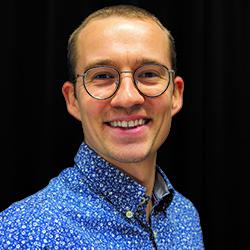I was trained as a biochemist during my undergraduate and master studies. Subsequently, I specialised in stem cell biology and early embryonic development during my PhD at the University of Cambridge. My work is focussed on how pluripotency – a cell’s ability to differentiate into any cell of the body – is established, maintained and executed. I found pluripotency to be of particular excitement as it offers the starting point for the treatment of disease‑induced loss of cells. Yet, many mechanisms of how pluripotency is regulated remain elusive. One challenge is that cells are conventionally grown on two‑dimensional plastic dishes. Fairly easy and robust, but it fails to incorporate the in vivo tissue architecture and biomechanical signals. To this end, we developed a microfluidic‑based technology to encapsulate cells into biomimetic three‑dimensional hydrogel scaffolds that enabled the study of biomechanical parameters (such as confinement) that would otherwise be neglected under conventional cell culture conditions. Since pluripotency is an evolutionary conserved feature of mammalian development, I will next be investigating pluripotency across species with special attention to endangered species. Understanding the species‑specific regulatory mechanism of pluripotency might assist conservation efforts and might ultimately refine our understanding of human development in health and disease.


